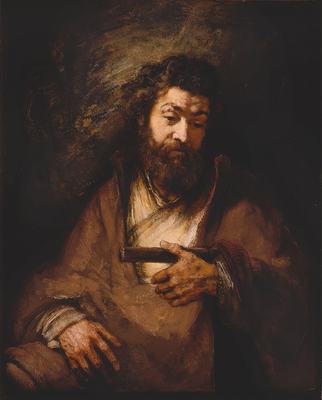During the first half of the seventeenth century Italian and Netherlandish painting reached new heights marking one of the great periods in European art. The visible world provided one of the most important motifs for this new art: landscape painting, the still life and genre painting all came into their own.
In Italian Baroque painting in Italy around 1600 there were two rival schools: Caravaggio followers such as Matthias Stom and Mattia Preti painted emphatically naturalistic figures in close-up, illuminated by stark shafts of light that pierced the darkness. Artists like Annibale Carracci and Domenichino aligned themselves more closely with tradition but imbued it with more lively observation of nature and emotion.













